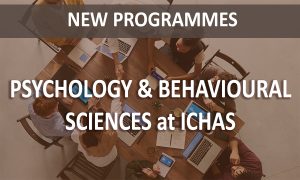
Hoʻoponopono: The Ancient Hawaiian Practice of Healing and Forgiveness
In a world where stress, conflict, and emotional baggage can weigh heavily on our well-being, finding inner peace and resolution is vital for mental, emotional, and even physical health. One such ancient practice, originating from the rich traditions of Hawaii, is Hoʻoponopono. This simple yet powerful method focuses on healing through forgiveness, reconciliation, and restoring balance in relationships, including with oneself.
What Is Hoʻoponopono?
At its core, Hoʻoponopono is a Hawaiian practice of reconciliation and forgiveness. The term itself can be broken down as follows:
- Hoʻopono means “to make right” or “to correct.”
- Repeated as Hoʻoponopono, it emphasises this process, translating to “to make doubly right” or “to put things back in balance.”
The practice was traditionally used in Hawaiian communities to resolve interpersonal conflicts. Elders or healers, known as kūpuna or kahuna lapaʻau, would guide families or groups through a structured process of dialogue and confession, promoting emotional healing, harmony, and unity.
However, in modern adaptations, Hoʻoponopono can be practised individually, focusing on personal forgiveness and emotional cleansing. It’s become popular worldwide as a tool for spiritual growth and emotional healing, resonating with people seeking ways to clear negative energy and restore inner peace.
The Four Pillars of Hoʻoponopono
At the heart of the contemporary Hoʻoponopono practice lies a simple, yet profound, four-step mantra:
- I’m Sorry – Acknowledging the hurt or the error that has occurred.
- Please Forgive Me – Asking for forgiveness, whether from oneself or others.
- Thank You – Expressing gratitude for the forgiveness received and the healing that is taking place.
- I Love You – Affirming love, which acts as the ultimate healing force.
This practice can be used during meditation, reflection, or even during times of conflict with others. By repeating these phrases, individuals can shift their mindset and release negative emotions, fostering a sense of peace, love, and connectedness.
Its Role in Modern Healing
While traditionally used within families or communities to resolve disputes, modern applications of Hoʻoponopono have expanded. Today, the practice is often incorporated into self-healing practices, therapy sessions, and even in corporate environments to promote mindfulness and interpersonal harmony.
Practitioners use it for various reasons:
- Releasing Past Trauma: By forgiving oneself and others, individuals can let go of past trauma that might be causing emotional or psychological blockages.
- Healing Relationships: Whether it’s romantic, familial, or professional, Hoʻoponopono provides a framework to heal fractured relationships through open-hearted communication.
- Promoting Self-Love and Acceptance: Many use the practice to foster a sense of self-worth and compassion, particularly when struggling with guilt, shame, or low self-esteem.
- Reducing Stress and Anxiety: Engaging with this gentle and forgiving practice helps people release negative emotions, bringing mental clarity and calm.
How to Practice Hoʻoponopono Yourself
If you want to integrate Hoʻoponopono into your life, the process is simple yet profound. Here’s how you can get started:
- Find a Quiet Space: Settle into a calm environment where you won’t be disturbed.
- Focus on an Issue: Bring to mind a person, situation, or aspect of yourself that you feel tension or conflict with.
- Repeat the Mantra: Silently or out loud, recite the four phrases: “I’m sorry. Please forgive me. Thank you. I love you.” Say each phrase with intention, truly feeling its meaning.
- Allow Emotions to Arise: As you repeat the phrases, emotions or memories may come up. Let them arise and release them without judgment.
- Practice Regularly: The more often you engage with Hoʻoponopono, the more you may experience its healing benefits.
In a world where it’s easy to hold onto pain and resentment, Hoʻoponopono offers a powerful way to forgive, heal, and restore balance. Whether you’re dealing with personal challenges, strained relationships, or emotional wounds, this ancient Hawaiian practice can be a profound tool for transformation.
If you want to learn more about Hoʻoponopono our very own Christine Beekman is hosting a workshop as part of Green Ribbon Month in the Hunt Museum on Wednesday 25th from 1 to 2 pm.

























